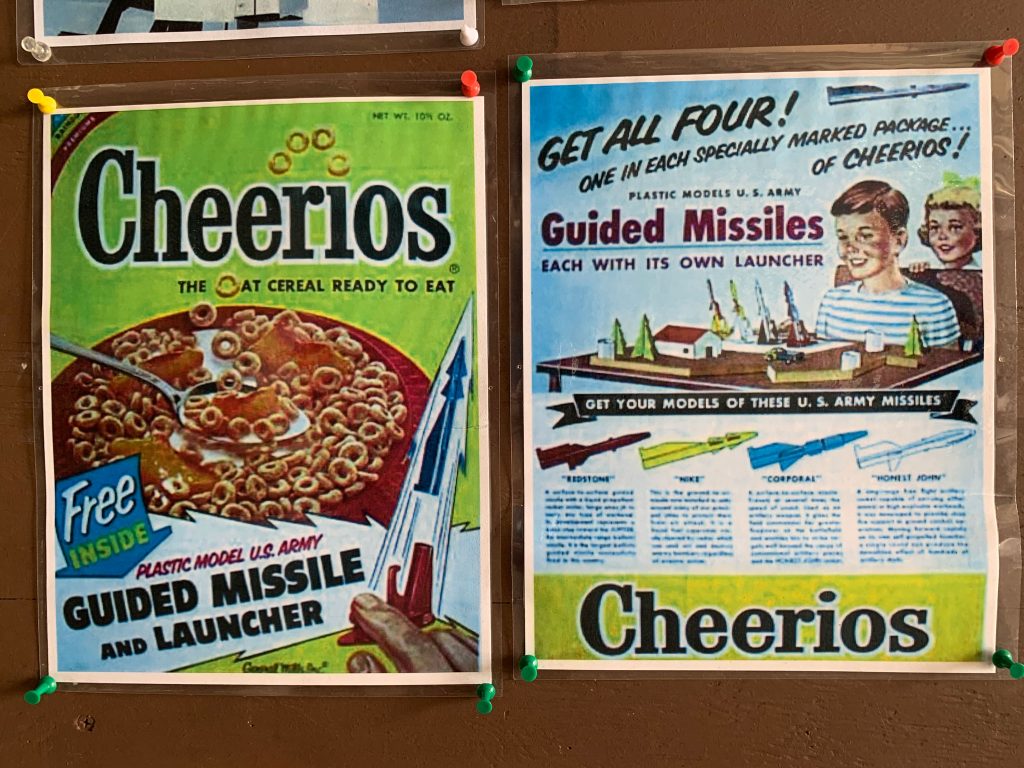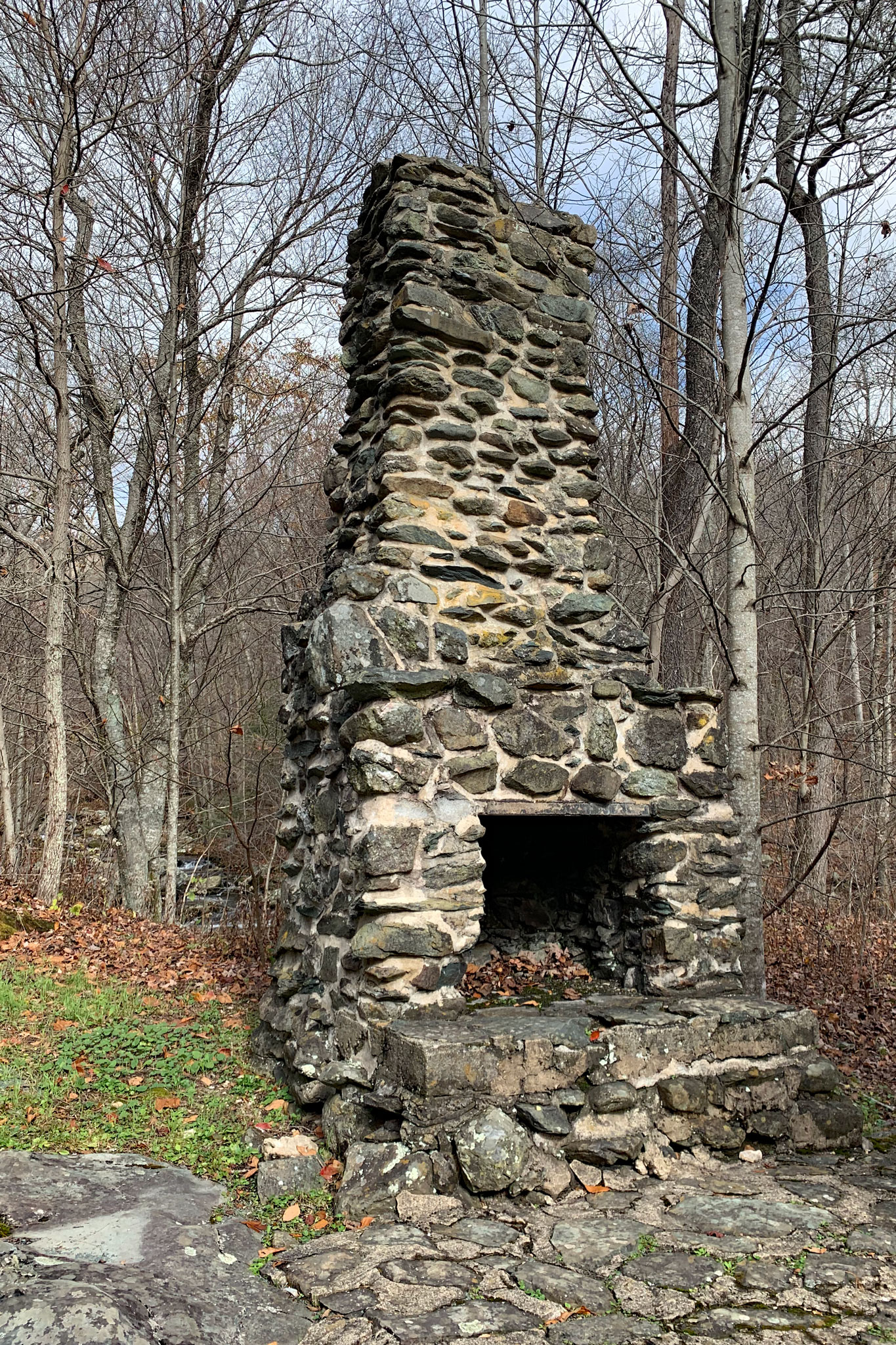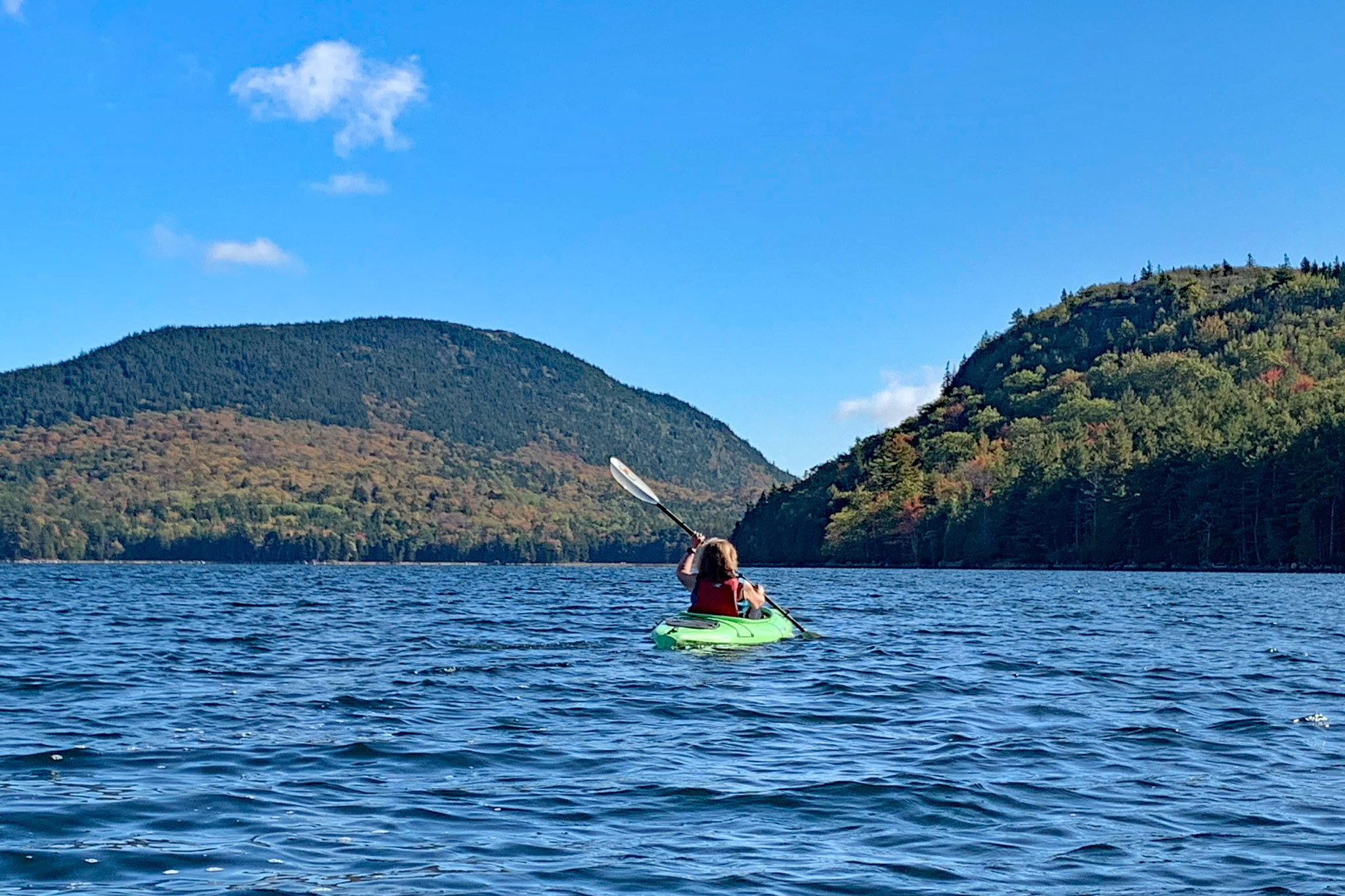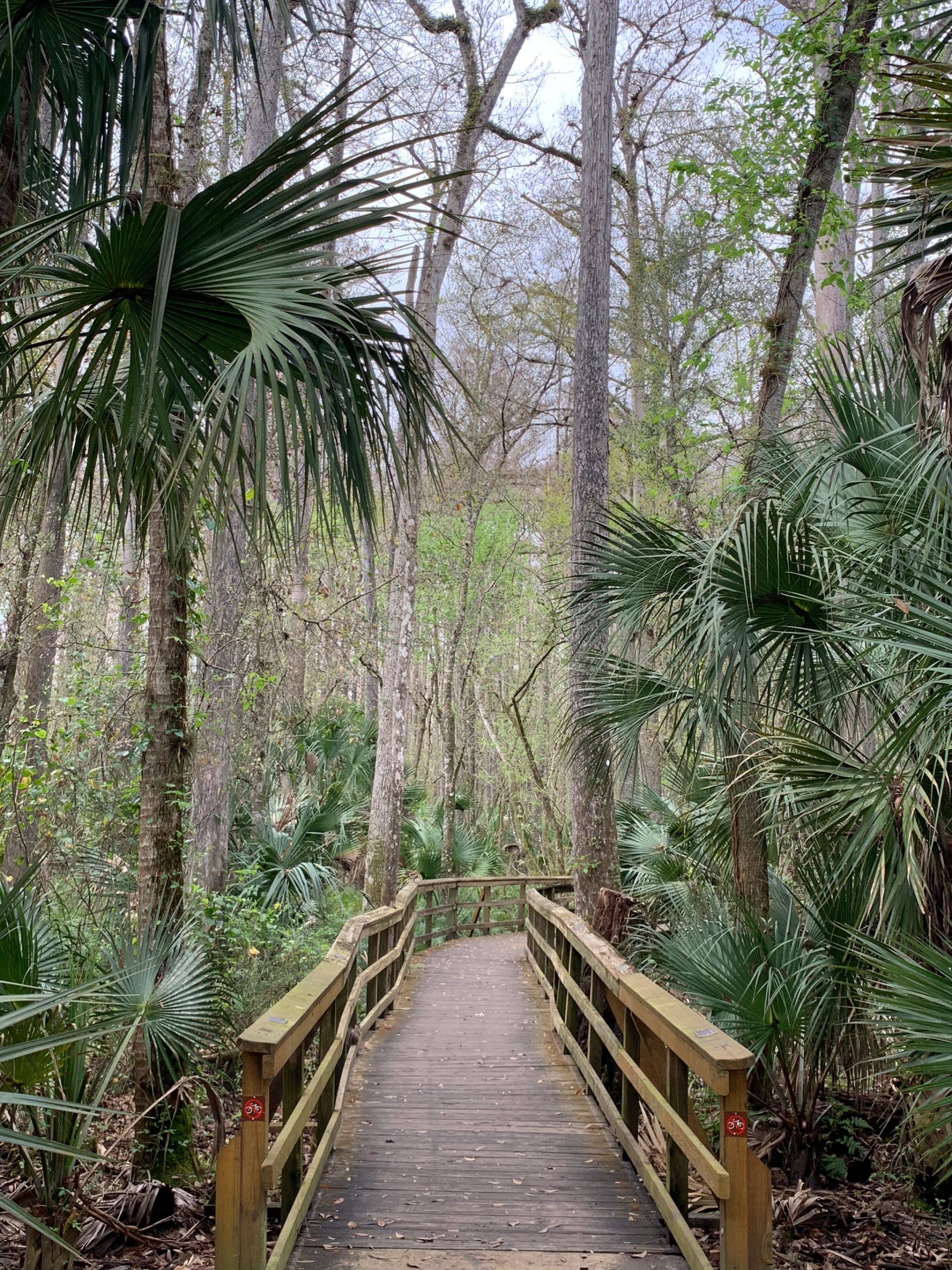After leaving Sanibel Island, we headed further south to the Big Cypress National Preserve and the Everglades National Park. Departing Sanibel was bittersweet. On the one hand, we looked forward to the wide-open spaces and new adventures at Big Cypress and Everglades. On the other hand, we had grown comfortable with the routine we established on Sanibel. Having the van at Periwinkle Campground on the island allowed sunrise or sunset walks on the beach, easy access to bike trails, and good cellular connectivity. It’s fascinating we find we are typically sadder to leave a location after a long stay (we had been on Sanibel Island for 10 days) than if leave a location after just a few nights. I guess that’s because a “deeper” connection is made, or maybe it’s simply we’re lazy and don’t want to change routines. It’s probably the latter. Plans are already being made to return to Sanibel in January 2022.

Travel days typically mean a stop at a grocery store, like Publix, to stock up on provisions. But food shopping in Florida has become more difficult after learning a member of the Publix’s founding family donated $300,000 to the January 6 rally/insurrection in Washington, DC. Many have called for a boycott of the Publix grocery store chain. Prior to learning of the political connection, our shopping experiences at Publix had been very good – the stores follow good safety measures, the store aisles are wide, and the vast majority of shoppers wore masks and kept their distance. It seemed safe, particularly compared to other stores we were avoiding. We subsequently did skip shopping at Publix a few times in our recent travels, but after experiences at their competitors, we have decided to prioritize our health over a political statement and plan to shop at Publix again prior to leaving the southeastern US. Yes, maybe this is selfish, but we’ll find other ways to make our political statements.
Here are a few snippets from 12 days in Southern Florida:
Kayaking. I enjoy serenely kayaking on lakes in New England (see post here) and admiring the vistas while maybe spooking a loon or seeing a fish jump. But kayaking in Big Cypress and the Everglades is an adventure sport – a mix of Demolition Derby while trying to avoid ramming mangrove roots within tight twisting “mangrove tunnels”, Amazing Race while scanning the channel for the elusive route markers that may have been swept away by a recent hurricane, and Survivor while dodging massive spider webs in those tunnels and steering clear of the alligator peering at you while gliding by. A pro tip: Either have another paddling party go through a mangrove tunnel first, or paddle behind someone who is tall (Betsy favors the latter). They’ll clear all the spider webs for you making the paddle much more enjoyable for you.

We got into the habit of asking the park rangers about current paddling conditions. I would guess in a survey of most trusted government employees, park rangers, in their gray and green uniform topped with the signature wide brim hats, would rank near the top. Since the rangers indicated conditions were good and did not warn us of any missing or eaten kayakers, we ventured out. But then again, did we specifically ask about missing or eaten kayakers? The routes through the mangroves are marked by plastic posts installed many years ago by the park service. Since some posts are now missing and others are completely encased within a mangrove, the paddle sometimes felt like a corn maze – advancing down one channel that we thought was the trail only to find it dead end. We did “get lost” a few times in the mangroves, which lead to a few terse words and tense moments, but ultimately, we backtracked and found our way. In fact, getting lost did take us to some scenic, quiet ponds that we later remarked were pretty cool. We pack extra waters and snacks now, just in case…
The birds, reptiles, and fish seen and heard while paddling were fantastic. Rounding a corner to encounter a heron hanging out in the mangroves, watching the mullets jump out of the water (one kayaker we passed said a mullet had just jumped into her kayak), and swiftly gliding past a resting alligator made for ever changing conditions. We did learn at an evening ranger talk that alligators may eat only once a week in the dormant season, and only need about 190 calories per day, or the equivalent of a protein bar. Human/alligator encounters in the Everglades that result in a bite are rare and usually involve either swimming in a gator hole (not recommended) or disturbing an alligator nest (really not recommended). We completed our journeys with all paddles and limbs intact and accounted for.
Ultimately, we launched the kayaks four different times while in Big Cypress and the Everglades and paddled a distance of around 20 miles. There are additional canoe/kayaking trails we did not do, so we hope to return in the future to explore new areas.
Bicycling. Ironically, we saw more gators while riding our bikes than while kayaking. Our rides ranged from 50 miles on the scenic dirt Loop Road in Big Cypress to less than 2 miles on the bike trail between Flamingo Campground and the Marina to observe the American crocodiles. We thought we hit the jackpot on the Loop Road ride where we saw nearly 10 alligators lounging on the sun on a cool day. But our 15-mile ride on the Shark Valley path blew that away. On a bright morning following a night that dipped into the 30’s, we counted over 50 alligators of all sizes sunning along the path.
Much of our cycling was on the main park road in the Everglades National Park. We’ve also driven that road multiple times. The road is flat and often very straight. Headwinds can be fierce and a rain shower soaks to the bone. Yet, cycling the road at around 15 mph provides a much better opportunity to peer across the glades and spy on the birds when compared to speeding by in the van.

One of our bike rides took us to a former Nike Missile Base that is now a historic site within the Everglades. This base was constructed in the early 1960s as an air defense location to protect against a possible air attack from Soviet forces based in Cuba. The small base primarily consisted of 3 missile barns, an assembly building, barracks for 140 soldiers, and a guard dog kennel. The site was decommissioned in 1979, thankfully never having had to launch a missile in defense. Today, volunteers man a small display area in one of the former missile barns. While living in Alaska, I had the opportunity to visit abandoned Nike sites around Anchorage and elsewhere as measures were conducted to address environmental contamination left behind by the military. Thus, it was fascinating to see another Nike site in what would have been a miserable spot to be stationed at in the summer heat of the 1960s and 1970s.


Ultimately, we cycled eight different times for a total distance of around 200 miles on seemingly endless flat and nearly straight roads. Simply based on cycling locations, I was glad to move on from the Everglades in search of rolling and twisting cycling routes.
Reptiles. Lastly, prior to moving on, I’d be remiss to not acknowledge two reptiles we encountered in the Everglades. Earlier in January, I had remarked to Betsy that I did not recall ever seeing a rattlesnake in the wild. Within two weeks, I had seen two diamondback rattlers while bicycling in Southern Florida. This one, on the Main Road in the Everglades, even provided me a show of its rattles as I watched from what I hoped was a safe distance. I guess I need to be careful about what I say I’ve seen – have I seen a mountain lion? A cougar?

We also renewed acquaintances with American crocodiles at the Flamingo marina. We got in the habit of wandering the marina near sunset to safely watch a few of the crocodiles glide through the salt water or rest at the boat launch.


While we stayed 12 days in Big Cypress and the Everglades, we did not have the same bittersweet feeling leaving as we had had when departing Sanibel. Maybe it was because we had moved around to three different campgrounds in the 12 days. Or because of the relative isolation at being at the end of the road – a safe place to socially distance during the pandemic, but with limited places to easily explore. We continue to pass up the opportunity for guided walks thru waist deep water in the Everglades… We left the Everglades with great memories (and briefly, a stowaway frog), but are looking forward to new vistas.


